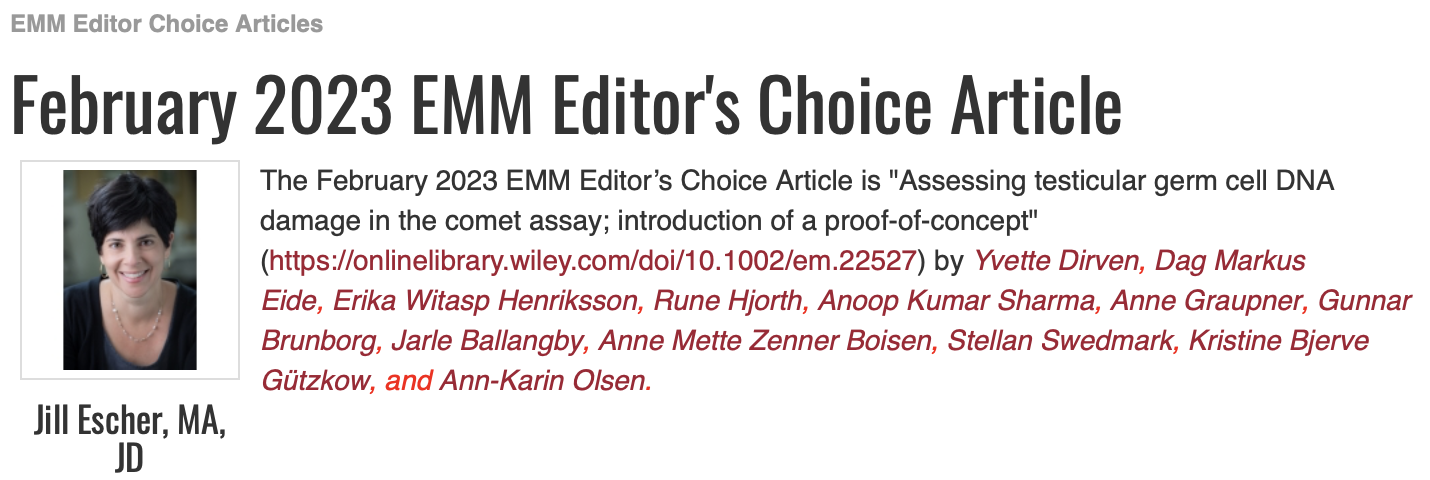
The February 2023 EMM Editor’s Choice Article is “Assessing testicular germ cell DNA damage in the comet assay; introduction of a proof-of-concept” by Yvette Dirven, Dag Markus Eide, Erika Witasp Henriksson, Rune Hjorth, Anoop Kumar Sharma, Anne Graupner, Gunnar Brunborg, Jarle Ballangby, Anne Mette Zenner Boisen, Stellan Swedmark, Kristine Bjerve Gützkow, and Ann-Karin Olsen.
https://onlinelibrary.wiley.com/doi/10.1002/em.22527
When it comes to male germ cells, we have a very limited genotoxicity assessment toolkit (and genotoxicity testing for female germ cells is nearly nonexistent). But given the wide variety of drug, pharmaceutical and chemical exposures experienced by male fetuses, infants, children, adolescents and adults, there is a public health imperative to improve our understanding regarding how these exposures may adversely impact the heritable molecular content of germ cells. DNA damage retained in the mature sperm holds the risk for conferring genetic disease on the next and even subsequent generations.
Few methods today are validated and accepted, and they can be labor-intensive, time consuming and expensive. Dirven et al. (https://onlinelibrary.wiley.com/doi/10.1002/em.22527) now propose a methodological concept to enable analysis of genotoxicity in testicular germ cells of mice, that can be incorporated into the current test guideline (TG) 489, the in vivo comet assay. The concept is based on the unique DNA content (ploidy), shape and size of different germ cell nucleoids, enabling identification of specific germ cell populations in testicular cell suspensions which constitute a mix og germ cells and somatic cells. In this manner separating data relevant to germ cells as opposed to the surrounding somatic tissues.
For their proof-of-concept, the team used a historical dataset from a previous in-house study examining genotoxic effects of selenium deficiency across two generations of Big Blue C57BL/6 mice (Graupner et al. 2015). Selenium deprivation led to significantly increased overall DNA damage levels in mixed cell populations from the testes of 8 to 11 week old mice.
For the proof-of-concept they focused on identification of haploid round spermatids and primary spermatocytes. They used three approaches for identification of haploid germ cell comets, to distinguish them from other germ cell populations. Utilizing the comet assay recordings of DNA content and DNA damage of individual comets, they offer a framework to distinguish testicular cell populations based on differences in DNA content/ploidy and appearance.
The concept allows both somatic and germ cells to be analyzed in the same animal, adding an efficient assay to the genotoxicity assessment toolbox for male germ cells, facilitating data that can be used for germ cell mutagenicity classification of compounds.

